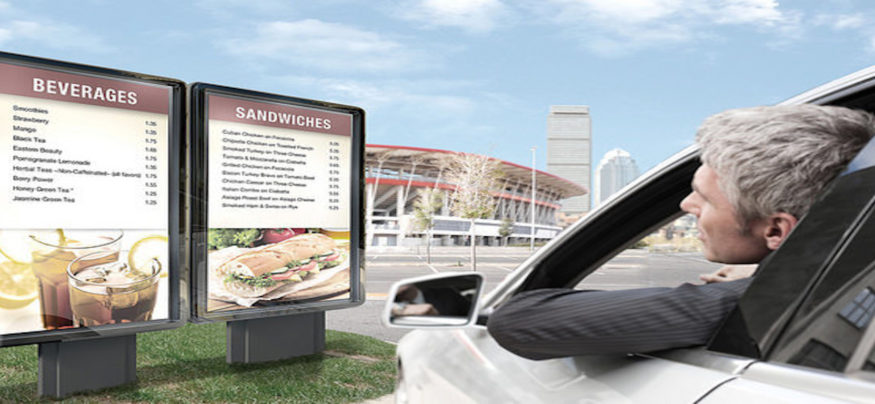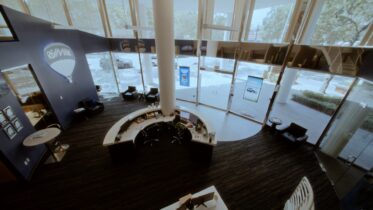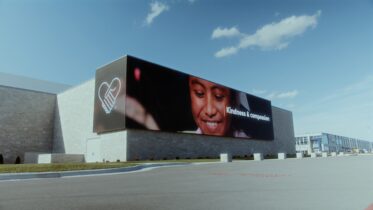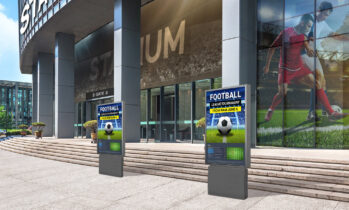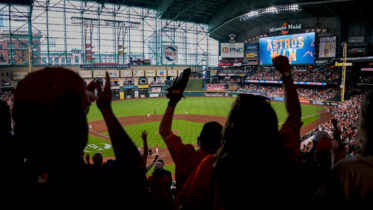Running targeted promotional campaigns has always been a challenge for quick service restaurants, but going digital is allowing operators to get more timely and tactical about what they want to emphasize and sell.
For decades, QSR operators planned and managed promotional campaigns days and weeks in advance because of the lead times needed to design, print, ship and post new menus and posters. But with outdoor digital signage, changes take a matter of minutes, as messages are fine-tuned and promotions are catered to the varying attributes of the people rolling into drive-thru lanes — the 7 a.m. crowd at a fast food operation tends to be very different from the 11 p.m. crowd, both in demographics and in what they want to eat.
Digital signage also fixes some basic issues faced by QSR operators, like “disappearing” breakfast menu items. Employees long had to apologize to people who wanted breakfast specials, but didn’t notice the “Not available after 11 a.m.” qualifier on menu boards.
Restaurant chains rarely share their numbers on new innovation, not wanting to educate competitors. But the widespread adoption of digital menu-boards inside QSR operations in North America and globally suggests that replacing posters with digital displays has increased profitability and delivered a strong, sustained return on the capital investment. If it hadn’t, they’d still just be testing, not rolling out.
As hardware costs have dropped and technology advances have made daylight-readable outdoor displays viable and affordable, many QSRs are converting menu boards and pre-sell marketing posters to digital versions.
Total Economic Impact
Tangible information on sales impacts and operating benefits is hard to find with outdoor displays, but a February 2017 commissioned study, The Total Economic Impact Of Samsung Outdoor Digital Menu Boards, conducted by Forrester Consulting on behalf of Samsung, presents a solid financial model and argument for transitioning to digital. The study suggests digital in drive-thru lanes decrease drive-thru times (more cars per hour means more sales), reduce food waste because of improved order accuracy, and reduce the labor costs of printing, shipping and putting new posters in place, and then verifying the right information is up where and when it needs to be.
The Impact of Drive-thru Digital Signage
Download the white paper to learn more about the benefits of outdoor digital menu boards. Download Now
The study — based on a composite model of a representative regional QSR chain and a 10-location pilot — also suggested outdoor digital menu boards running targeted promotional campaigns will increase profitability for operators.
The Forrester researchers surveyed approximately 150 people working in the QSR sector, and established some clear trends and pain points. Their findings included:
- The majority of respondents generated an average of 54 percent of their order revenues from the drive-thru lane;
- Most served around 800 drive-thru customers each week, with lunch and dinner being prime times;
- 89 percent of operators are manually changing menu boards one to three times daily;
- Operators run an average of 3.7 promotions each month.
Survey respondents identified increased sales and improved profitability as the main motivation for going digital. Said one respondent: “The reason why we’re going toward digital versus regular menu signage is to allow us to change content more frequently, be more dynamic with that content, and be more targeted.”
Increasing Sales With Visual Promotional Campaigns
Forrester’s composite model suggests operators will see bumps in total sales from increased conversions of promoted menu items and through up-sold items. Delivering more timely and relevant messages in drive-thrus, the model suggests, will gradually boost conversion rates from 1 percent after one year to 2 percent after three.
That may not sound like much, but in the context of QSR operators, it can be huge. At a conservative average cost per promoted item of $3.75 and average profit margin of 15 percent, the 10-location pilot of digital menu boards would see profits grow by almost $873,000 over five years.
The research also suggests outdoor digital menu boards are effective at suggestive selling. Customers were more likely to add extra items to their orders, such as fries and beverages, when they ordered at drive-thrus with digital menu displays. This makes sense: Rich, targeted visuals are going to be more compelling than disembodied voices coming out of an order board speaker.
The financial model’s numbers suggest going digital drives a 2.5 percent increase in the average order value of purchases. For a QSR chain that has, on average, daily drive-thru traffic of 372 customers and a baseline average order value of $7, a 2.5 percent bump is an annual revenue increase of $236,600 for the 10-location pilot. With 20 percent profit margins, digital screens can increase profitability by $47,320 per year. QSR operators can get a personalized cost-benefit analysis based upon the financial model using an online tool created by Forrester.
A New Standard
Drive-thru represents as much as 70 percent of sales for U.S. QSR operators according to QSR Magazine, so technologies that deliver even modest percentage increases, while showing a clear ROI, will be readily adopted. It enormously helps that the latest generations of outdoor displays are now reliable, affordable and win any viewability battles with direct sunlight.
Between boosted sales and better experiences for customers, it’s looking like outdoor digital menus will gradually be as common in drive-thrus as the menu displays inside QSRs.
Dunkin’ Donuts is boosting the customer experience in drive-thru lanes with three-screen outdoor menu displays.
